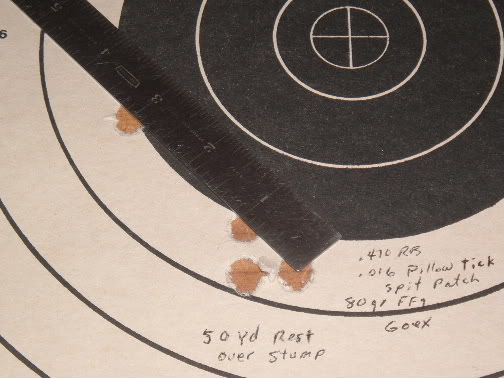Do this over a chronograph. You will find that long before you reach the limit of the gun's strength to take larger powder charges, you reach a point where the extra powder just does not produce much more velocity or energy DOWNRANGE. In the current issue of Muzzle Blasts, the Bevel Brothers publish a chart from Lyman on .50 cal. rifles, showing various powder charges, velocities, energy figures, at both the muzzle and at 100 yds. The difference between shoot 60 grains, and 120 grains is telling. The extra powder is basically a waste of our money. I think you will find that FFg, SIFTED, will give you consistent velocities and results, where even sifted FFFg powder will give you a wider SDV.
As for patch and ball combination, take the recommendation above, and start with standard, .015 thick patches, which you can buy from a number of suppliers who have Links here. When the gun arrives, by all means measure the bore diameter. Even a few thousandths can cause problems with the choice of patch and ball. Why this gun was not made in a standard .50 cal. escapes me, as it will force you to mold your own bullets, or find someone who does mold this odd size. These are replica guns, and not the real thing. No one is going to be confused into thinking they are the real guns. There is therefore no reason to make them an off-sized caliber for " historic reasons ". This is the equivalent of making a .44 Hnery replica in the original .44 Rimfire cartridge, instead of .44-40. The first is not available except occasionally in limited runs, while the second cartridge is.
Paul





